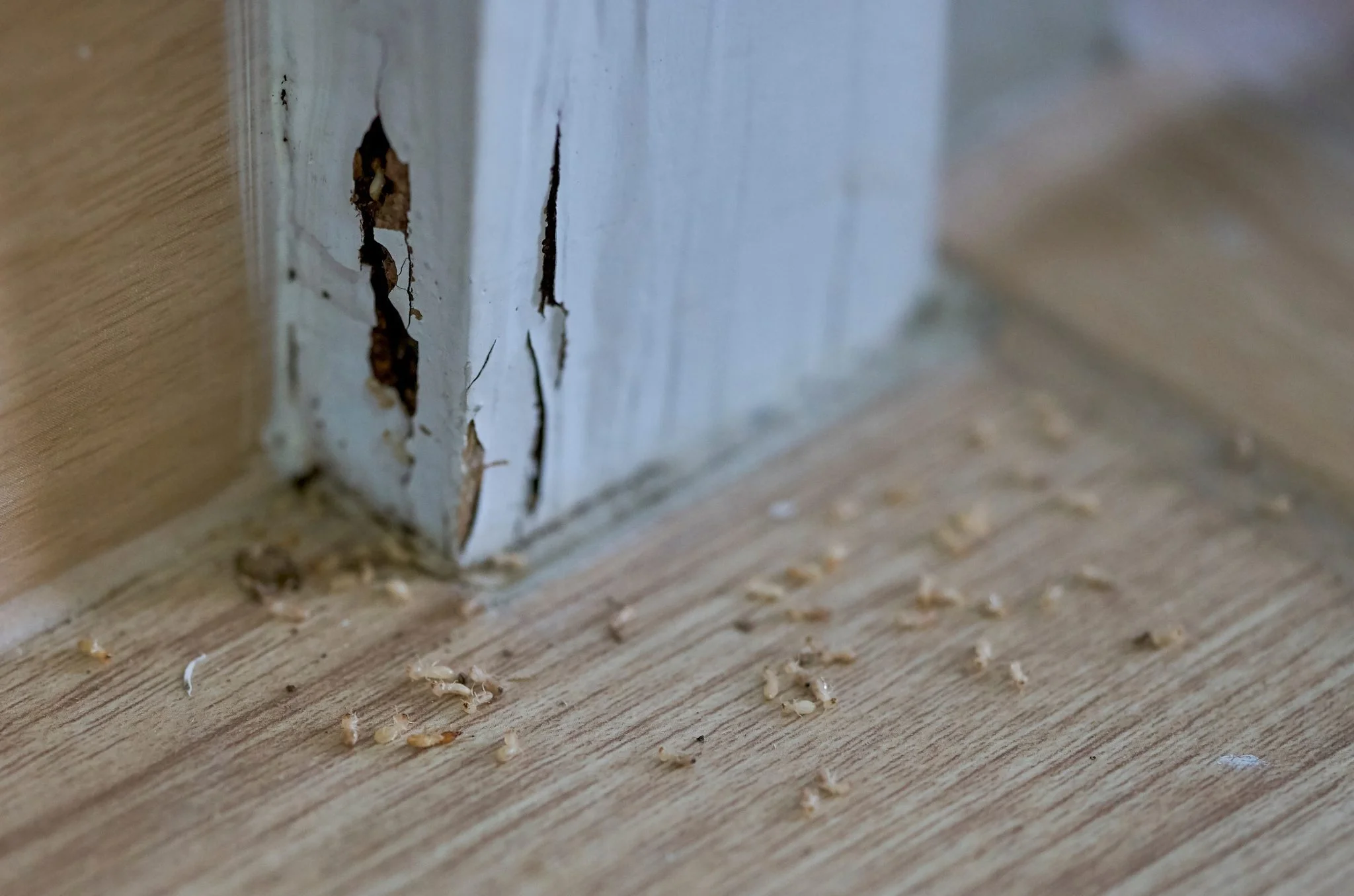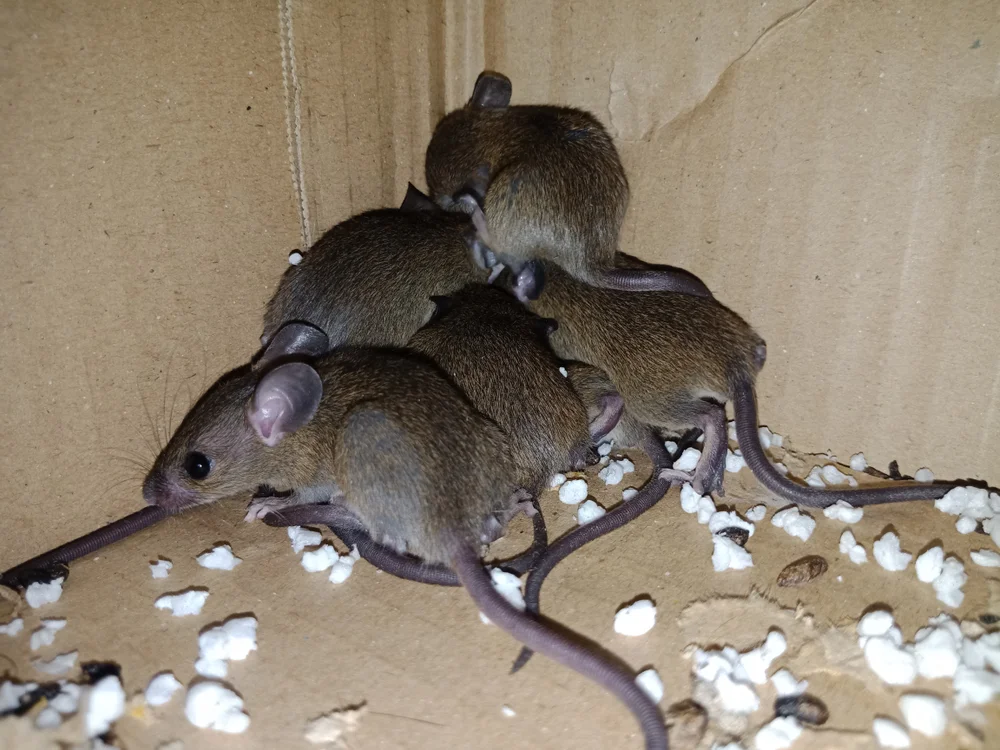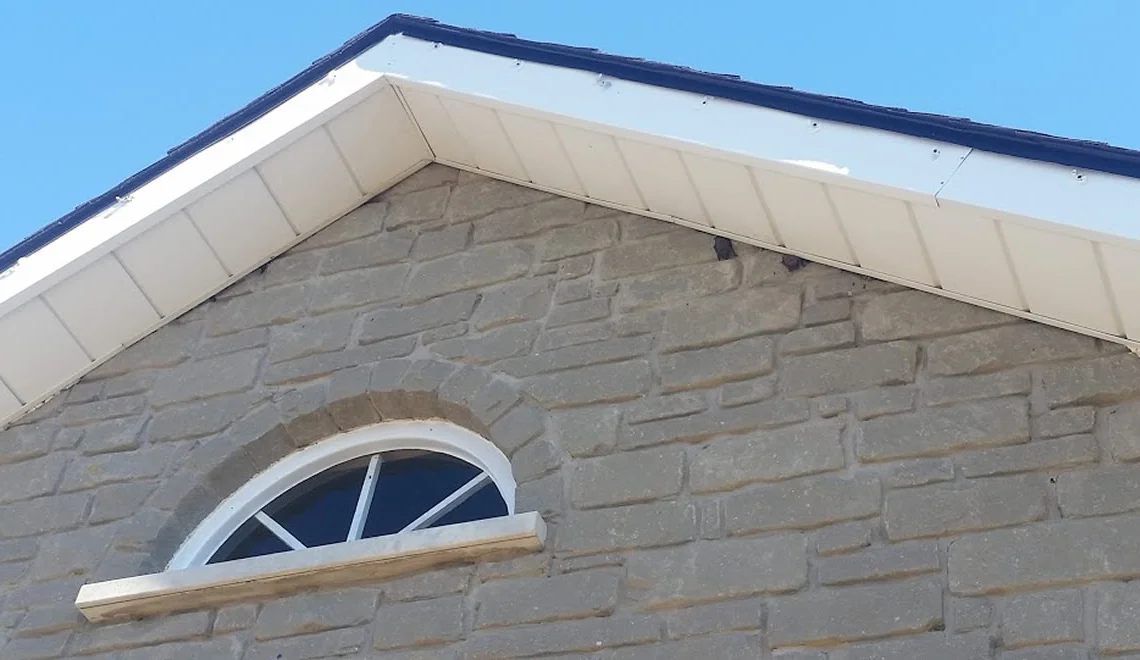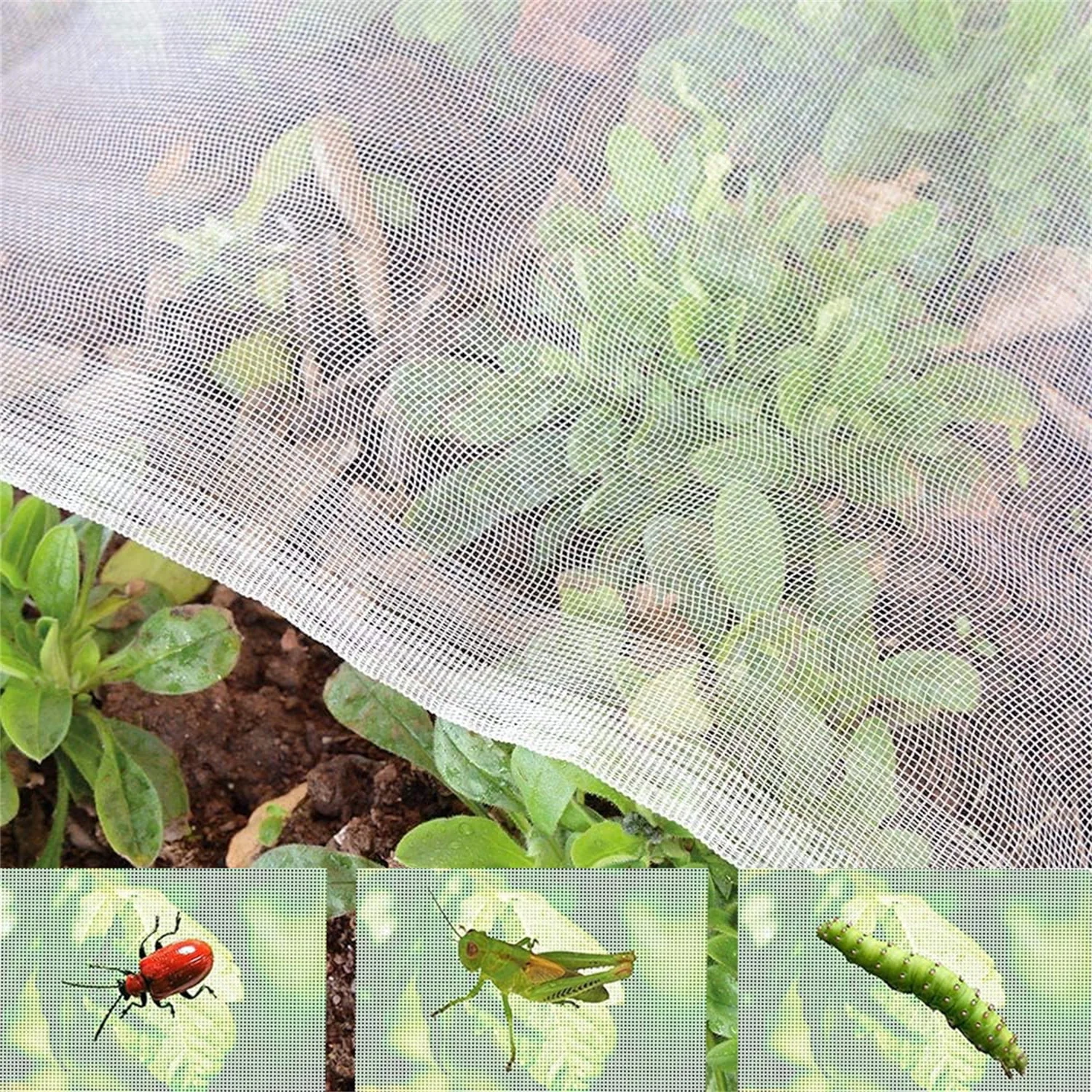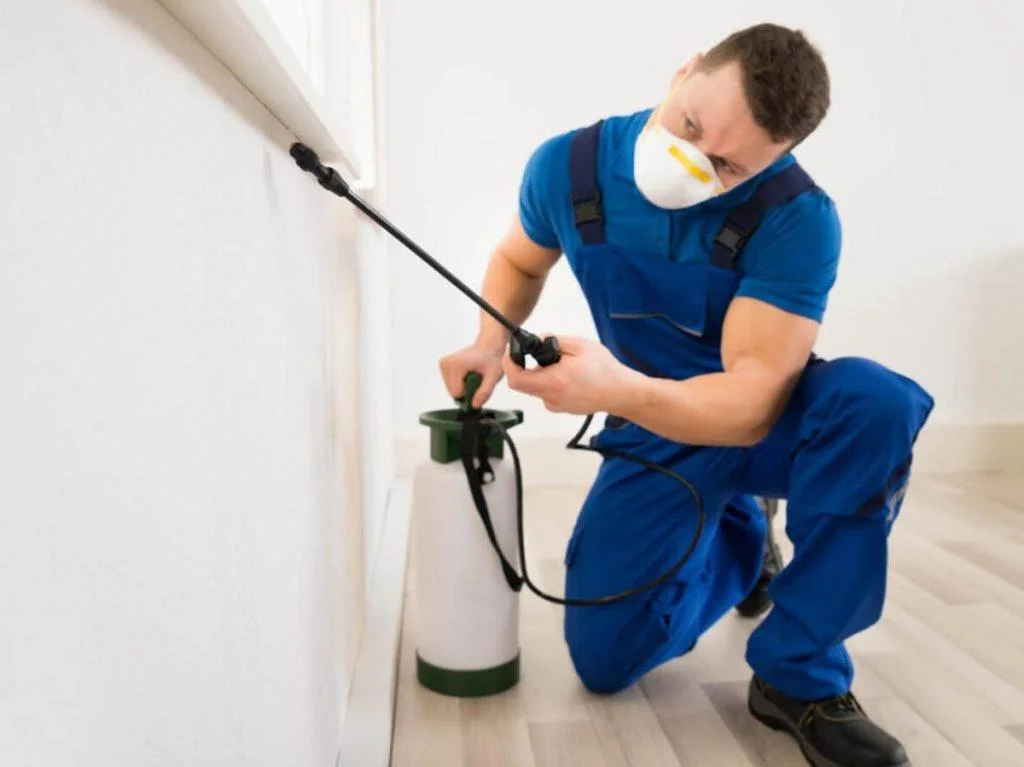Established suburban neighborhoods offer the appeal of mature landscapes,
well-developed communities, and time-tested infrastructure, but they also present
unique pest management challenges that require specialized expertise. Unlike newer
developments, these neighborhoods have decades of pest establishment, aging building
materials, and mature vegetation that can harbor complex pest populations. Effective
established suburb pest control requires understanding how aging infrastructure,
mature ecosystems, and accumulated pest pressure create ongoing management challenges.
From historic homes with original construction vulnerabilities to mature tree canopies
that provide pest highways between properties, mature neighborhood pest management
demands comprehensive strategies that address both current infestations and long-term
prevention. Professional suburban pest control services provide the expertise
needed to navigate complex pest relationships that have developed over decades while
implementing modern prevention techniques that protect property values and enhance
quality of life in these cherished residential communities.
Living in an established neighborhood? Our specialized team offers
mature suburb pest solutions
EXPERT and comprehensive
neighborhood pest management programs tailored for established communities.
Protect your established home today!
Unique Pest Challenges in Established Suburbs
Established suburban neighborhoods face distinct pest management challenges that
distinguish them from newer developments. Understanding these unique factors helps
homeowners and communities develop effective mature neighborhood pest control
strategies that address decades of accumulated pest pressure:
-
Aging building materials and infrastructure Older homes often have
settling foundations, aging siding, and deteriorating caulking that create
numerous entry points for pests. Original construction methods may not have
included modern pest prevention features, requiring retrofitting and ongoing
maintenance to achieve effective exclusion.
-
Mature vegetation and pest corridors Established tree canopies, overgrown
shrubs, and decades-old landscaping create continuous pathways that allow pests
to move freely between properties. Mature trees may harbor established insect
populations while providing bridges directly to roof lines and upper floors.
-
Accumulated pest populations and established territories Long-established
pest populations have had decades to build extensive colonies, develop resistance
to common treatments, and establish complex territorial relationships that make
elimination more challenging than in newer areas.
-
Underground utility networks and pest highways Older neighborhoods often
have extensive underground infrastructure including sewer systems, utility tunnels,
and cable runs that provide protected travel routes for rodents and insects between
properties and throughout the neighborhood.
-
Neighborhood-wide coordination challenges Established neighborhoods may
have diverse property management approaches, varying maintenance standards, and
different pest control philosophies that complicate community-wide coordination
efforts essential for effective area-wide pest management.
Professional established suburb pest control addresses these complex challenges
through comprehensive assessment of neighborhood-specific conditions, customized
treatment strategies that work with existing infrastructure, and long-term management
approaches that account for the interconnected nature of mature residential communities.
Common Pests in Established Suburban Neighborhoods
Mature suburban communities provide ideal conditions for various pest species
that take advantage of established ecosystems, aging infrastructure, and decades
of habitat development. Understanding these common threats helps residents
implement effective prevention and treatment strategies:
Termites in Older Homes
Professional termite inspection revealing damage in mature residential property
Termites pose significant threats to established suburban homes, particularly
those with original wood construction, aging foundations, and mature landscaping
that provides moisture and cover. Mature home termite control requires
understanding how decades of environmental exposure, settling, and modifications
have created vulnerabilities that termites can exploit.
Older homes may have multiple termite exposure points including original
construction gaps, renovation additions that weren't properly protected,
and aging foundation treatments that have lost effectiveness over time.
Comprehensive termite management addresses both active infestations and
long-term prevention through modern treatment methods adapted to work
with existing home construction.
Rodents in Mature Infrastructure
Comprehensive rodent control addressing established populations in older homes
Established neighborhoods often harbor extensive rodent populations that
have developed complex territory systems spanning multiple properties.
Mice and rats in mature suburbs benefit from established travel routes,
multiple food sources, and numerous harborage opportunities in aging
structures and overgrown vegetation.
Neighborhood rodent management requires coordinated approaches that
address territory-wide populations rather than individual property
infestations. Successful control involves identifying and eliminating
travel corridors, addressing food sources across multiple properties,
and implementing exclusion strategies that account for aging building
materials and infrastructure vulnerabilities.
Tree-Dwelling and Canopy Pests
Professional treatment of tree-dwelling pests in mature suburban canopy
Mature tree canopies in established suburbs support various pest populations
including squirrels, carpenter ants, bark beetles, and numerous flying
insects that use trees as staging areas for home invasions. Large trees
may harbor pest colonies that have been established for decades, making
them particularly challenging to control.
Tree-related pest management requires specialized knowledge of canopy
ecosystems, proper treatment techniques that don't damage valuable mature
trees, and coordination with tree care professionals to address pest
issues while maintaining tree health. Strategic tree management can
eliminate pest bridges to homes while preserving the mature landscape
character that makes established neighborhoods so desirable.
Cockroaches in Aging Infrastructure
Older neighborhood infrastructure including aging sewer systems, utility
tunnels, and deteriorating basements provides ideal habitat for cockroach
populations that can be extremely difficult to eliminate. German cockroaches,
American cockroaches, and Oriental cockroaches each thrive in different
aspects of aging suburban infrastructure.
Effective cockroach control in established suburbs requires understanding
neighborhood-wide infrastructure that supports these populations. Treatment
strategies must address not only individual home infestations but also
the community infrastructure that allows cockroach populations to persist
and reestablish after individual property treatments.
Carpenter Ants and Wood-Destroying Insects
Mature suburban homes with original wood construction, aging decks, and
established landscaping often experience problems with carpenter ants,
powder post beetles, and other wood-destroying insects that have had
decades to establish territories and cause cumulative damage.
These pests often exploit moisture problems that have developed over time,
including roof leaks, plumbing issues, and poor drainage around foundations.
Successful control requires addressing both the pest populations and the
underlying moisture conditions that support their continued activity in
older residential structures.
Addressing Aging Infrastructure Pest Issues
Aging infrastructure in established suburbs creates unique pest management
challenges that require specialized approaches different from newer construction.
Infrastructure-based pest control addresses the reality that older
homes and neighborhoods have accumulated vulnerabilities that provide
ongoing pest opportunities requiring comprehensive management strategies.
Professional assessment of aging infrastructure identifies specific
vulnerabilities including foundation settling, siding deterioration,
roof aging, and utility penetrations that have loosened over time.
Modern retrofitting techniques can address these issues while preserving
the character and value of established homes.
Foundation and Basement Issues
Older home foundations often develop cracks, settling gaps, and moisture
problems that provide ideal conditions for pest establishment. Basement
areas in established suburbs may have accumulated moisture issues, inadequate
ventilation, and storage conditions that attract various pests including
rodents, insects, and moisture-loving arthropods.
Foundation pest management addresses both immediate pest problems
and underlying structural issues that support ongoing pest activity.
Modern exclusion techniques can be adapted to work with older foundation
designs while providing effective long-term protection.
Attic and Roof Line Vulnerabilities
Aging rooflines in established suburbs often develop gaps, loose shingles,
and deteriorating flashing that provide entry points for flying insects,
birds, and small mammals. Older attics may lack modern insulation and
air sealing that could help prevent pest intrusion.
Comprehensive attic pest management includes both immediate pest elimination
and retrofitting older construction with modern exclusion features. These
improvements often provide energy efficiency benefits in addition to pest
prevention, making them valuable investments for established home owners.
Utility and Service Entry Points
Decades of utility installations, service upgrades, and infrastructure
modifications often leave older homes with numerous unsealed entry points
around pipes, cables, and service connections. These gaps provide easy
access for various pests while being easily overlooked during routine
maintenance activities.
Professional utility entry point management identifies and seals these
often-hidden vulnerabilities using modern materials and techniques that
provide long-lasting protection. This systematic approach addresses one
of the most common pest entry routes in established residential properties.
Pest Management in Mature Landscapes
Strategic landscape pest management preserving mature suburban character
Mature suburban landscapes provide numerous benefits including established
shade, property value enhancement, and neighborhood character, but they
also present complex pest management challenges. Mature landscape pest
control requires balancing effective pest prevention with preservation
of valuable established vegetation and neighborhood aesthetic appeal.
Decades-old trees, overgrown foundation plantings, and established garden
areas often harbor extensive pest populations while providing continuous
pathways for pest movement between properties. Strategic landscape
management can eliminate pest attraction and harborage while maintaining
the mature character that makes established neighborhoods so desirable.
Tree Canopy Management
Large mature trees create continuous canopies that allow pests to travel
between properties without touching the ground. Strategic tree pruning
can eliminate these pest highways while maintaining tree health and
aesthetic value. Professional arboricultural pest management coordinates
tree care with pest control to achieve both objectives simultaneously.
Tree species selection for replacement plantings should consider pest
resistance, mature size limitations, and compatibility with pest prevention
goals. Native species often provide better pest resistance while supporting
beneficial insects that help control pest populations naturally.
Foundation Planting Modifications
Overgrown foundation plantings in established suburbs often provide pest
harborage directly against home exteriors while blocking access for
inspection and treatment. Strategic foundation planting management creates
pest-free zones around homes while maintaining attractive landscaping.
Modern foundation landscaping principles can be adapted to established
neighborhoods through selective removal, strategic pruning, and replacement
with pest-resistant species that provide visual appeal without creating
pest opportunities. These modifications often enhance home security and
energy efficiency in addition to pest prevention benefits.
Garden and Mulch Area Management
Established garden areas and heavily mulched zones can harbor extensive
pest populations including ants, termites, and various insects that use
these areas as staging grounds for home invasion. Garden pest management
strategies maintain productive growing areas while minimizing pest attraction
and harborage opportunities.
Integrated pest management in mature gardens emphasizes beneficial insects,
proper plant selection, and garden hygiene practices that support healthy
plant growth while discouraging pest establishment. These approaches often
improve garden productivity while reducing pest pressure on nearby homes.
Ready to master pest control in your established neighborhood? Our specialized
mature suburb pest management programs provide the expertise and
comprehensive solutions your established home deserves –
schedule your neighborhood assessment today!
Neighborhood-Wide Pest Management Coordination
Community Pest Pressure Management
Coordinated neighborhood approach ensuring comprehensive pest protection
Established suburban neighborhoods benefit significantly from coordinated
pest management approaches that address area-wide pest populations rather
than treating individual properties in isolation. Community pest
coordination recognizes that mature neighborhoods have interconnected
pest populations that require comprehensive management strategies.
Neighborhood coordination involves educating residents about shared pest
challenges, promoting consistent treatment timing, and addressing common
area pest harboring conditions. This collaborative approach often achieves
better results than individual property treatments while building community
relationships and shared investment in neighborhood quality.
Informal HOA and Resident Coordination
Many established suburbs lack formal HOA structures but can still benefit
from informal coordination among neighbors who share pest management goals.
Neighbor coordination programs help organize collective treatment
efforts, share cost savings, and ensure that pest control efforts on
one property don't simply drive problems to neighboring homes.
Informal coordination can include neighborhood pest education events,
coordinated treatment timing, bulk purchasing programs, and shared
monitoring efforts that help identify emerging pest issues before they
become widespread problems. These collaborative approaches often strengthen
community bonds while achieving superior pest control results.
Municipal and Local Government Coordination
Established suburbs may have municipal pest management programs that address
public areas, storm drain systems, and other infrastructure that affects
neighborhood-wide pest pressure. Coordination with local government programs
ensures that private pest control efforts complement public health and
infrastructure management activities.
Municipal coordination may include mosquito control programs, vector control
initiatives, and infrastructure maintenance that affects pest populations.
Understanding and participating in these programs enhances the effectiveness
of private pest control efforts while supporting community-wide pest
management goals.
Pest Control for Historic and Heritage Homes
Historic and heritage homes in established suburbs require specialized
pest management approaches that protect both structural integrity and
historical value. Historic home pest control must balance effective
pest elimination with preservation requirements that may limit treatment
options and modification possibilities.
Heritage preservation guidelines often restrict the types of modifications
and treatments that can be applied to historic properties. Professional
historic home pest management works within these constraints while still
providing effective protection through carefully selected methods and
materials that meet both pest control and preservation objectives.
Preservation-Compatible Treatment Methods
Historic homes require pest control methods that don't damage original
materials, alter architectural features, or compromise historical authenticity.
Heritage-compatible pest control emphasizes reversible treatments,
period-appropriate materials, and techniques that preserve the integrity
of original construction while providing effective pest protection.
Modern pest control technology can often be applied in ways that are invisible
and reversible, allowing historic properties to benefit from contemporary
pest management while maintaining their historical character. Professional
providers understand preservation requirements and can develop customized
approaches that meet both objectives.
Original Construction Vulnerabilities
Historic homes often have original construction features that create unique
pest vulnerabilities including hand-hewn timbers with natural gaps, original
foundation designs without modern moisture barriers, and period-appropriate
materials that may be more susceptible to pest damage than modern alternatives.
Understanding historic construction methods helps identify specific vulnerabilities
while developing protection strategies that work with original design rather
than against it. Period-appropriate maintenance and carefully planned improvements
can address pest issues while preserving historical authenticity.
Documentation and Reporting for Historic Properties
Historic properties often require detailed documentation of pest control
activities for preservation authorities, insurance requirements, and heritage
society guidelines. Historic property pest documentation provides
the detailed records needed to demonstrate appropriate care and treatment
of heritage properties.
Professional documentation includes photographic evidence, treatment records,
material specifications, and preservation impact assessments that support
ongoing heritage designation requirements. This documentation also supports
property value preservation and future treatment planning.
Seasonal Pest Management in Established Suburbs
Spring (March-May)
- Comprehensive home inspection after winter
- Tree and landscape pest emergence
- Foundation and infrastructure assessment
- Termite swarm prevention
Focus: Address winter damage and emerging pest activity
in mature landscapes and aging infrastructure.
Summer (June-August)
- Active pest population management
- Tree canopy and landscaping treatments
- Moisture control in older structures
- Flying insect control programs
Focus: Manage peak pest activity while protecting
mature landscapes and aging building materials.
Fall (September-November)
- Overwintering pest prevention
- Infrastructure winterization
- Rodent exclusion preparation
- Landscape cleanup and modification
Focus: Prepare aging infrastructure for winter and
prevent pest establishment in overwintering sites.
Winter (December-February)
- Indoor pest monitoring
- Infrastructure maintenance planning
- Moisture management in older homes
- Preparation for spring activities
Focus: Monitor heated spaces and plan comprehensive
improvements for aging suburban infrastructure.
Protecting Property Values in Established Neighborhoods
Effective pest management plays a crucial role in protecting and enhancing
property values in established suburban neighborhoods. Property value
pest protection recognizes that pest problems can significantly impact
home marketability, sale prices, and long-term investment returns in
mature residential communities.
| Value Protection Factor |
Pest Management Benefits |
Long-term Impact |
| Structural Integrity |
Prevents termite and carpenter ant damage; protects aging wood
construction; maintains foundation stability.
|
Preserves structural soundness; prevents costly repair requirements;
maintains insurance eligibility and financing options.
|
| Marketability and Appeal |
Eliminates pest issues that deter buyers; creates move-in ready
conditions; demonstrates proper home maintenance.
|
Supports premium pricing; reduces time on market; enhances
buyer confidence and inspection results.
|
| Neighborhood Reputation |
Prevents widespread pest problems; maintains community standards;
supports collaborative neighborhood improvement efforts.
|
Preserves neighborhood desirability; supports stable property
values; attracts quality residents and maintains community character.
|
| Historic Value Preservation |
Protects original materials and architectural features; maintains
heritage designation eligibility; prevents irreversible damage.
|
Supports premium historic property values; maintains eligibility
for preservation incentives; preserves community heritage assets.
|
Investment Protection
Professional pest management for established suburban homes typically
pays for itself through prevented damage, maintained property values,
and enhanced marketability. Prevention costs significantly less than
repair and remediation expenses.
Modern Technology for Established Suburbs
Advanced pest management technology adapted for mature residential properties
Modern pest management technology can be effectively adapted to established
suburban homes while respecting existing architecture and neighborhood
character. Technology integration for mature homes focuses on
solutions that enhance pest control effectiveness without compromising
the aesthetic and historical value of established properties.
Smart monitoring systems, digital documentation platforms, and precision
treatment technologies can be installed discretely in older homes while
providing superior pest detection and management capabilities. These
modern tools often prove more effective in established suburbs where
complex pest relationships require sophisticated monitoring and response.
Discrete Monitoring Systems
Modern monitoring technology can be installed in established homes without
altering architectural features or neighborhood aesthetics. Discrete
pest monitoring provides continuous surveillance capabilities while
maintaining the visual appeal and character that makes established
neighborhoods desirable.
Wireless monitoring systems, concealed sensors, and smartphone-integrated
alerts enable proactive pest management without visible technology intrusion.
These systems prove particularly valuable in older homes where pest entry
points may be numerous and difficult to monitor through traditional methods.
Digital Documentation for Aging Properties
Comprehensive digital documentation supports ongoing pest management in
established homes while providing valuable records for property maintenance,
insurance requirements, and future sale preparations. Digital pest
management records track treatment history, identify recurring problem
areas, and guide future prevention investments.
Historical treatment data helps identify patterns specific to aging
infrastructure and changing neighborhood conditions. This information
supports more effective treatment planning and helps prioritize home
improvement investments that provide both pest control and property
value benefits.
Established Suburb Success Stories
"Our 1960s ranch home had persistent ant problems for years until
PestControl100 developed a comprehensive approach that addressed both
the aging foundation issues and mature landscape factors. Two years
later, we're finally pest-free and our home value has actually increased."
- Carol H., Homeowner, Oakwood Heights
★★★★★
"Living in a historic district meant we needed pest control that wouldn't
damage our 1920s craftsman home. PestControl100's heritage-compatible
approach eliminated our termite issues while preserving all the original
architectural details. The city preservation board was impressed with
their methods."
- Richard M., Historic Homeowner, Heritage Village
★★★★★
"Our neighborhood coordinated pest control through PestControl100 and
saw amazing results. The rodent problems that had plagued our block
for decades are finally gone, and several neighbors have commented
on how much more enjoyable their yards are now."
- Susan L., Neighborhood Coordinator, Maple Grove
★★★★★
Frequently Asked Questions
How is pest control different for older homes compared to new construction?
Older homes present unique challenges including aging materials that create
pest entry points, established pest populations that have had decades to
become entrenched, and infrastructure vulnerabilities that don't exist
in newer construction. Treatment approaches must account for potential
historical value, work around existing architectural features, and address
accumulated pest pressure. We often need to retrofit older homes with
modern pest prevention features while preserving their character and value.
Can you treat pest problems without damaging historic or vintage home features?
Absolutely. We specialize in heritage-compatible pest control methods that
preserve original architectural features while providing effective pest
elimination. Our approaches emphasize reversible treatments, period-appropriate
materials when possible, and techniques that work with historic construction
rather than against it. We coordinate with preservation authorities when
required and provide detailed documentation to support heritage designation
requirements.
Why do established neighborhoods seem to have more persistent pest problems?
Established neighborhoods have several factors that contribute to persistent
pest problems: mature vegetation creates pest corridors between properties;
aging infrastructure provides numerous entry points and harborage areas;
established pest populations have had decades to build extensive territories;
and underground utility networks create protected travel routes. Additionally,
inconsistent pest control efforts across the neighborhood can allow problems
to persist and spread between properties.
How important is neighborhood coordination for pest control in established suburbs?
Neighborhood coordination is extremely important in established suburbs because
pest populations are typically interconnected across multiple properties.
Individual treatments often just push pests to neighboring homes rather than
eliminating them from the area. Coordinated approaches that address area-wide
pest populations, shared timing of treatments, and collective habitat
modification achieve much better long-term results than isolated individual
efforts.
Integrating Pest Control with Home Renovations
Home renovations in established suburbs provide excellent opportunities
to address long-standing pest issues and implement modern prevention
features. Renovation pest control integration ensures that
improvement projects enhance pest protection while upgrading other
home systems and features.
Coordinating pest control improvements with renovation projects often
provides cost savings and superior results compared to addressing pest
issues separately. Access during renovation allows for comprehensive
treatment of areas that are normally inaccessible and installation
of prevention features that integrate seamlessly with updated home systems.
Kitchen and Bathroom Renovations
Kitchen and bathroom renovations provide opportunities to address moisture
issues that attract pests, seal utility penetrations that provide entry
points, and install modern materials that resist pest damage. Renovation
pest prevention incorporates pest-resistant design features and materials
that provide long-term protection while enhancing functionality and aesthetics.
Modern plumbing and electrical installations can eliminate the gaps and
penetrations that provide pest access in older homes. Coordinating pest
control improvements with renovation work ensures that new installations
include proper sealing and pest prevention features from the beginning.
Foundation and Basement Improvements
Foundation repairs and basement improvements offer ideal opportunities to
address major pest entry points and moisture issues that support pest
activity in older homes. Comprehensive foundation pest prevention can
be integrated with waterproofing, insulation, and structural improvements
to provide multiple benefits simultaneously.
Modern foundation treatment methods can be applied during renovation work
to provide long-term termite protection and rodent exclusion. These
treatments are often more effective and less expensive when coordinated
with foundation improvement projects rather than implemented separately.
Attic and Roof Improvements
Roof replacement and attic improvement projects provide access for comprehensive
pest exclusion work that addresses entry points, improves ventilation, and
eliminates harborage areas. Attic pest prevention integration with
insulation and ventilation improvements provides energy efficiency benefits
along with pest protection.
Modern roofing materials and installation techniques can incorporate pest
prevention features that weren't available when older homes were originally
constructed. Strategic planning ensures that roof improvements enhance both
weather protection and pest exclusion capabilities.
Environmental and Health Considerations
Established suburban families often have specific environmental and health
concerns that affect pest control decisions. Family-safe pest control
in mature neighborhoods must account for children, pets, elderly residents,
and individuals with health sensitivities while still providing effective
pest elimination and prevention.
Indoor Air Quality in Older Homes
Health-conscious pest control protecting families in established neighborhoods
Older homes may have ventilation systems and air circulation patterns
that require special consideration during pest control treatments.
Indoor air quality pest control uses methods and materials that
minimize indoor air impact while providing effective pest elimination
in homes where air circulation may be limited or unpredictable.
Modern low-impact treatment methods can be particularly effective in
older homes where traditional approaches might create indoor air quality
concerns. Precision application techniques and advanced materials provide
superior pest control while maintaining healthy indoor environments
for families.
Pet and Wildlife Safety
Established neighborhoods often have abundant wildlife and many families
with pets that require special consideration during pest control activities.
Pet-safe pest control uses methods and timing that protect domestic
animals while effectively managing pest populations that may also pose
threats to pet health and safety.
Mature suburban ecosystems support various wildlife species that can be
affected by pest control activities. Integrated pest management approaches
protect beneficial species while targeting problematic pests, supporting
the ecological balance that makes established neighborhoods attractive
places to live.
Garden and Landscape Safety
Many established suburban residents maintain vegetable gardens, fruit trees,
and edible landscaping that requires special consideration during pest
control treatments. Garden-safe pest control protects food production
areas while managing pest populations that threaten both homes and garden
productivity.
Organic and integrated pest management approaches often work particularly
well in established suburban gardens where mature ecosystems can support
beneficial insects and natural pest control mechanisms. These methods
enhance both pest control effectiveness and garden health simultaneously.
Long-term Pest Management Planning
Established suburban homes benefit from comprehensive long-term pest
management planning that anticipates changing conditions, aging infrastructure,
and evolving pest pressures. Long-term pest prevention strategies
provide ongoing protection while adapting to the unique challenges of
maintaining older homes in mature neighborhoods.
| Planning Timeframe |
Key Considerations |
Recommended Actions |
| Annual Planning |
Seasonal pest cycles; aging infrastructure assessment;
landscape maintenance coordination; treatment effectiveness evaluation.
|
Comprehensive annual inspections; seasonal treatment programs;
infrastructure improvement prioritization; landscape modification planning.
|
| 5-Year Planning |
Major infrastructure aging; landscape maturation; neighborhood
changes; treatment technology advancement; regulatory updates.
|
Infrastructure replacement planning; landscape renovation coordination;
treatment program updates; technology integration opportunities.
|
| 10+ Year Planning |
Major home renovations; neighborhood evolution; climate change
impacts; pest population shifts; new pest species introduction.
|
Comprehensive home improvement integration; neighborhood coordination
initiatives; adaptive management strategies; future-proofing investments.
|
Maintenance Investment Strategy
Long-term pest management planning helps established suburban homeowners
prioritize improvements and coordinate pest control investments with
other home maintenance activities for maximum effectiveness and value.
Ready to master pest control in your established neighborhood? Our comprehensive
mature suburb pest management programs provide the specialized expertise
your established home deserves. From historic preservation to modern technology
integration – discover your custom solution today!
Established Suburban Areas We Serve
Our established suburb pest management expertise serves mature residential
neighborhoods throughout the United States. We specialize in the unique
challenges of different types of established communities:
Historic Districts
Historic districts require specialized pest management that balances effective
pest control with preservation requirements. Our heritage-compatible methods
protect both property and historical value while meeting strict preservation
guidelines and maintaining eligibility for historic designations.
Post-War Suburbs (1940s-1960s)
Post-war suburban developments share common construction characteristics
and aging patterns that create predictable pest challenges. Our experience
with these neighborhoods enables efficient, effective solutions that address
era-specific vulnerabilities while preserving the character that makes
these communities desirable.
Tree-Lined Neighborhoods
Mature tree canopies create beautiful neighborhoods but also complex pest
management challenges. Our tree canopy pest management strategies eliminate
pest corridors and harborage areas while preserving the valuable mature
vegetation that defines these established communities.
Nationwide Established Suburb Service Coverage
Serving established suburban neighborhoods across America with specialized mature community expertise

